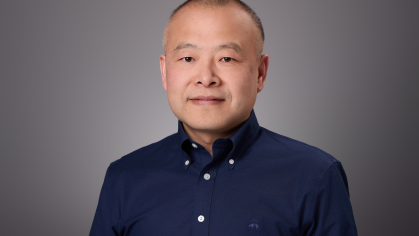Simulating In-lab Research Experiences with Virtual Research Group (VRG) Modules

Surmounting barriers to in-person laboratory research opportunities for STEM students has been a seven-year passion project for Jonathan Singer, an associate professor in the Department of Mechanical and Aerospace Engineering, who was recently awarded the Mary W. Raisler Distinguished Teaching Chair in Mechanical Engineering.
His recently co-authored paper in the Journal of Chemical Education, “Virtual Research Group Modules: Scalable Simulations of STEM Research,” details the results of a multi-year collaborative study that engaged high school and college students in simulated in-lab research experience.
“In 2014, I was selected as a Yale Scientific Teaching Fellow, which made me think about the concept of scientific teaching and how to increase student engagement,” he recalls. “I’d been remembering how much my undergraduate research experience was life-changing for me and influenced how my career would play out. I started to think about how to give every student that experience, without getting them into the lab.”
Working with the New Jersey Governor’s School for Engineering and Technology (NJGSET), a program for gifted rising high school seniors, and Marissa Tousley from Rose-Hulman Institute of Technology, Singer has developed a new type of scalable research simulation that promotes interest and engagement in STEM by replicating critical attributes of traditional undergraduate research experiences.
These virtual research group (VRG) modules incorporate existing scientific data in what Singer calls “a pen-and-paper gamified format following the process of conducting research.”
Tackling an Established Problem
Singer wanted to be able to simulate the fun of serendipitous discovery and the truly synthetic approach that are at the core of the scientific research experience. “It’s difficult to engineer serendipity, but when it occurs, it is such a special moment,” he explains. “I wanted to distill the moment of making a critical thinking leap, without needing weeks of training on equipment.”
“Lab classes can focus on measuring one thing, but many research projects require different techniques. The goal was scalability – something that could be done with pencils and maybe a few YouTube videos.”
The key was for students to investigate a material that had years of existing data and research behind it—block copolymers (BCPs), a class of material used in everything from Post-It notes and sneaker soles to chewing gum and car dashboards.
By understanding information and unraveling curated data, students were able to simulate the discovery of these materials. Eliminating data that was not useful was part of the process. Singer had also tracked down Dr. Geoffrey Holden, who been part of the Shell research team that discovered the material. Dr. Holden participated in an interview with the students that has been recorded for other versions of the activity.
Simulating the Research Process
Singer ran the VRG five times over the years with NJGSET students taking a materials science elective. Concurrently, Tousley adapted the module as part of a junior level chemical engineering course in Terre Haute, Indiana at Rose-Hulman.
In both formats, students were supplied with introductory “scaffolding” lectures, a demonstration of BCP materials properties, multiple rounds of VRG activity, a summary presentation, and the interview with Holden. Working in teams, they used data to analyze a selected experimental technique, repeating the process until they solved the problem or ran out of time.
RHIT students mostly received the same information and data, but their VRG modules were run as an out-of-class project rather than a group in-class project.
Despite the differences in VRG delivery, every group from each set of students strongly indicated that the VRG program helped them to think and work like scientists.
Planning for the Future
The Rutgers Center for Math, Science and Computer Education (CMSCE) helped Singer and Tousley organize a two-day, with optional third day, workshop for K-12 science teachers that ran through and explained a VRG module version. Participant feedback was positive, and strongly recommended developing a VRG biology module.
“Based on their feedback, the next challenge is to identify a good biology problem to work with to follow through on this recommendation so we can fit it into their curricula. Another option is to continue with future workshops to used they activity to assist educators with incorporating research-inspired ideas into their classes,” says Singer.
Dedication to a Mentor
He has dedicated the paper to the memory of Max Mintz, a professor of computer and information science at the University of Pennsylvania who passed last April. “Max was one of the first mentors who made me feel like I could be a contributing member of the scientific community. Whether it was chats over coffee, through his class, or co-reviewing a math textbook, he always treated me as a peer,” Singer recalls. “I was just one of hundreds of students he influenced in this way. I had a chance to discuss this work with him a few times over the years I was working on it, and I was really looking forward to sharing the analyzed results with him during my next visit.”


